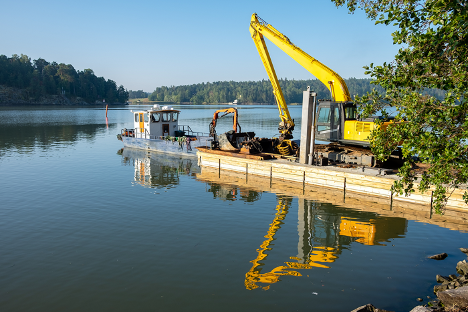To move silt from lake bottom to a distant area, hydraulic dredging uses the energy of pushing water at a high velocity through a pipeline. Sediment is then separated from water once it reaches its destination.
One method of parting sediment and water on dredging sites is utilizing Geotextile Dewatering Tubes. Compared to Dewatering Bags, Geotextile Dewatering Tubes are fabricated from specially engineered geotextiles and offer superior containment of fine solids at higher water flow rates.
As part of the dredging process, they filter sediment from pumped effluent, prevent sludge buildup, and reduce hydraulic volume in waterways, allowing boats and ships to navigate safely through the surrounding canals and rivers. Geotextile Tubes are often stacked onsite to create less space for layout and reduce costs by using combined gravity to increase dewatering rates.

The environmental impact of Geotextile Dewatering Tubes in dredging is minimal. When sludge is transferred into the Geotextile Tubes, polymers can be introduced to increase the size of silt particles to bind them together. The fabric will then filter out the water after accumulating a greater volume of trapped sludge.
As dewatering procedures progress, the volume of the bags gradually decreases, allowing more material to be pumped into the tubes until full (at 80% capacity). The materials can be retrieved from the bags or tubes when completely dried out to create new land, beaches, fertilizer, or landfills. If the material that is injected into the bags is uncontaminated, there is little disturbance placed on the ecosystem with the returned water. Contaminated dredged materials should be discarded according to EPA guidelines and your site plans.
Contact Our Team at GEI Works to discuss your project and develop a solution.
geiworks.com | (772) 646–0597 | info@geiworks.com




